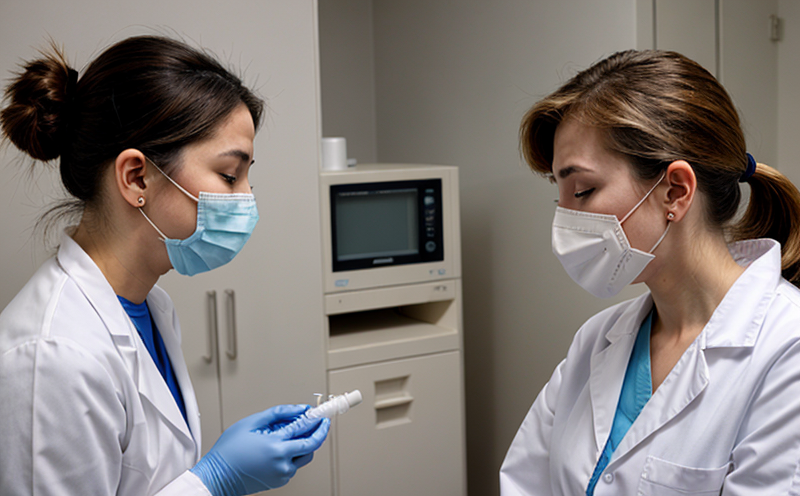Occupational Allergen Testing in Veterinary Laboratories
The field of occupational allergen testing within veterinary laboratories is critical for ensuring the safety and well-being of laboratory personnel who may be exposed to various allergens during their work. These allergens can include animal dander, fur, feathers, as well as other biological materials that pose a risk to sensitive individuals.
Occupational allergen testing aims to identify potential allergens in the workplace environment and to quantify these allergens through specialized sampling techniques. The primary goal is to protect workers from developing allergic reactions or exacerbating existing conditions such as asthma, eczema, or other respiratory issues. This service plays a crucial role in maintaining a safe work environment for veterinary laboratory staff.
The process begins with the identification of potential allergens that may be present in the workplace. Common allergens include fur and feathers from various animals, certain chemicals used in laboratory procedures, and even plant materials like pollen brought into the facility by personnel. The next step involves collecting samples from different areas within the laboratory where these allergens are likely to accumulate.
Sampling methods may vary but typically involve air sampling using specialized collection devices designed to capture airborne particles effectively. Additionally, surface swabbing or wipe sampling might be employed depending on the specific nature of the suspected allergen and its potential exposure route. Once collected, these samples undergo rigorous analysis in our state-of-the-art laboratories.
Our laboratories utilize advanced instrumentation such as immunoassays, enzyme-linked immunosorbent assays (ELISAs), and mass spectrometry to accurately measure the levels of allergens present in each sample. These methods allow us to provide precise quantitative results which are essential for understanding the extent of exposure faced by employees.
Based on these measurements, we can then recommend appropriate control measures aimed at reducing worker exposure to harmful substances. This could include changes in work practices, improvements in ventilation systems, or additional protective equipment like respirators and gloves if necessary. By implementing such measures early on, we help prevent the onset of occupational allergies among staff members.
It is important to note that regular monitoring of allergen levels throughout the year helps maintain a safe working environment continuously over time. Our team works closely with clients to establish effective sampling schedules tailored specifically for their unique operational needs and environmental conditions.
Scope and Methodology
The scope of our occupational allergen testing service includes the identification, quantification, and control measures related to potential allergens found in veterinary laboratory settings. We offer comprehensive assessments covering both airborne particles as well as surface contaminants that could pose risks to employees.
- Identify common allergens like animal dander, fur, feathers, or plant materials
- Collect samples using appropriate sampling techniques (airborne sampling, surface swabbing)
- Analyze collected samples using advanced analytical instruments including immunoassays and ELISAs
- Provide quantitative results indicating the levels of allergens detected
- Recommend control measures based on analysis results to minimize worker exposure
Eurolab Advantages
At Eurolab, we pride ourselves on offering unparalleled expertise and reliability when it comes to occupational allergen testing in veterinary laboratories. Our team of qualified professionals uses cutting-edge technology and follows internationally recognized standards throughout our entire process.
- Strict adherence to ISO 17025 accreditation ensuring accuracy and consistency
- Utilization of highly sensitive detection methods compliant with EN ISO/IEC 17025:2017
- Pioneering research in the field backed by years of experience
- Dedicated customer service providing support before, during, and after testing
Competitive Advantage and Market Impact
Eurolab's competitive advantage lies in our commitment to providing accurate, reliable data that helps veterinary laboratories maintain a safe working environment for their staff. By adhering strictly to ISO 17025 accreditation standards, we ensure consistent quality across all services offered. Our use of leading-edge technology and experienced personnel enables us to deliver timely reports which are crucial for making informed decisions regarding workplace safety.
Our approach has significant market impact by promoting best practices in occupational health management within the veterinary sector. Through our rigorous testing protocols, we contribute towards creating healthier environments where both animals and humans can coexist safely.





